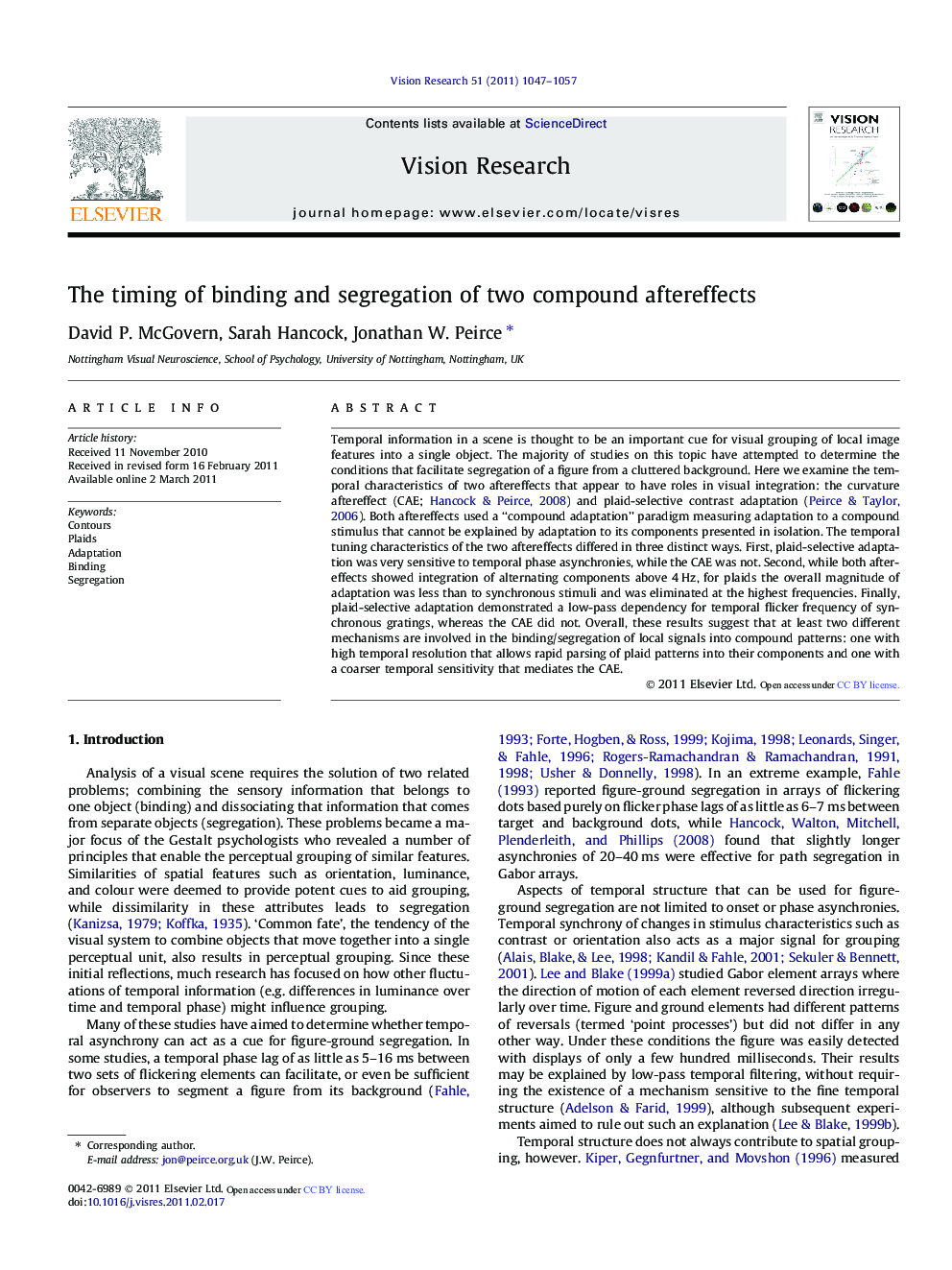| کد مقاله | کد نشریه | سال انتشار | مقاله انگلیسی | نسخه تمام متن |
|---|---|---|---|---|
| 6203776 | 1263445 | 2011 | 11 صفحه PDF | دانلود رایگان |

Temporal information in a scene is thought to be an important cue for visual grouping of local image features into a single object. The majority of studies on this topic have attempted to determine the conditions that facilitate segregation of a figure from a cluttered background. Here we examine the temporal characteristics of two aftereffects that appear to have roles in visual integration: the curvature aftereffect (CAE; Hancock & Peirce, 2008) and plaid-selective contrast adaptation (Peirce & Taylor, 2006). Both aftereffects used a “compound adaptation” paradigm measuring adaptation to a compound stimulus that cannot be explained by adaptation to its components presented in isolation. The temporal tuning characteristics of the two aftereffects differed in three distinct ways. First, plaid-selective adaptation was very sensitive to temporal phase asynchronies, while the CAE was not. Second, while both aftereffects showed integration of alternating components above 4Â Hz, for plaids the overall magnitude of adaptation was less than to synchronous stimuli and was eliminated at the highest frequencies. Finally, plaid-selective adaptation demonstrated a low-pass dependency for temporal flicker frequency of synchronous gratings, whereas the CAE did not. Overall, these results suggest that at least two different mechanisms are involved in the binding/segregation of local signals into compound patterns: one with high temporal resolution that allows rapid parsing of plaid patterns into their components and one with a coarser temporal sensitivity that mediates the CAE.
⺠Plaid and curvature adaptation effects show different dependencies for temporal phase and frequency. ⺠Plaid adaptation is highly sensitive to the temporal phase of its constituent gratings. ⺠Our results suggest that at least two neural mechanisms underlie the combination of local features into compound patterns.
Journal: Vision Research - Volume 51, Issue 9, 11 May 2011, Pages 1047-1057